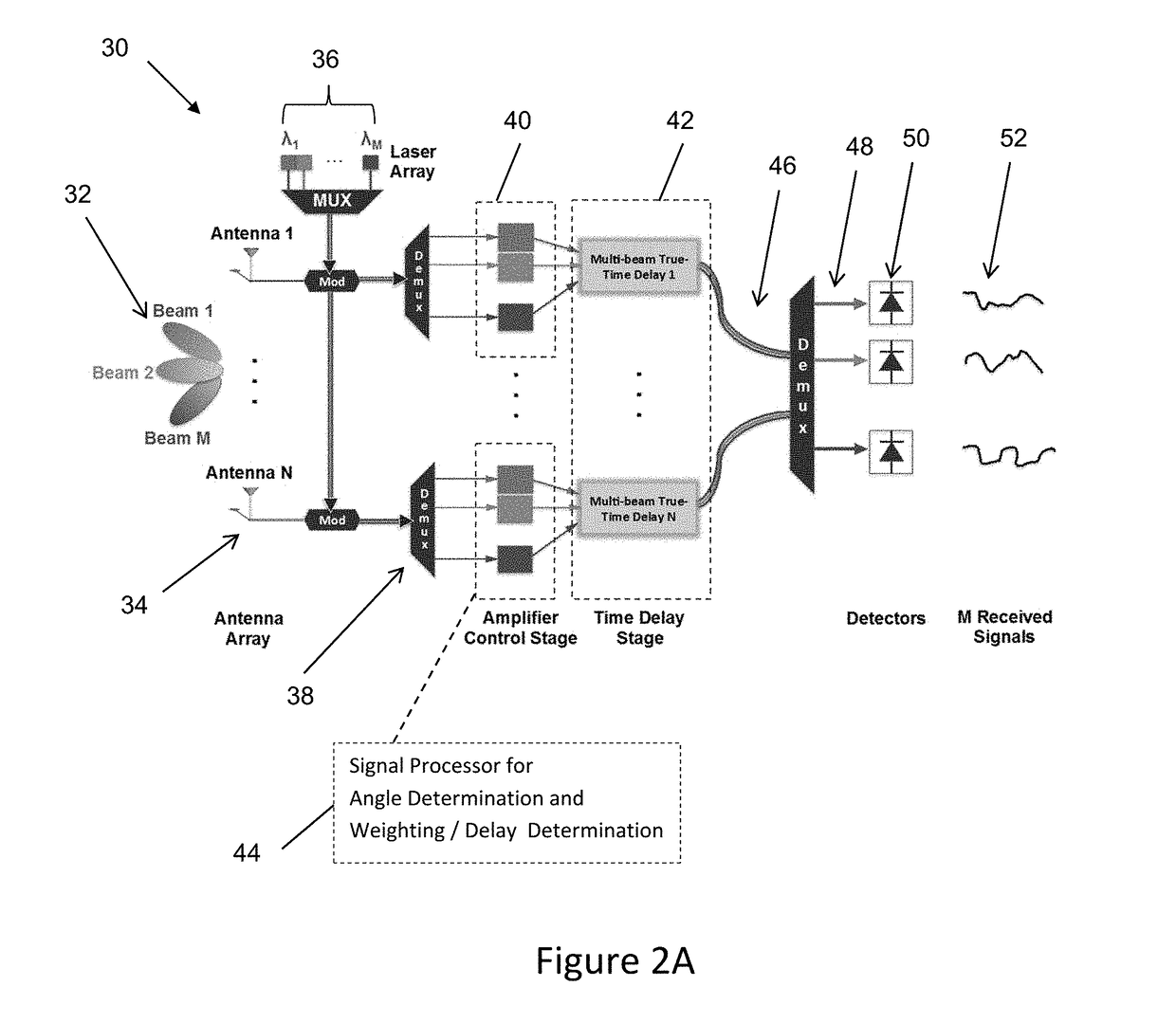Multibeam radio frequency photonic beamformer using a multi-signal slow light time delay unit
a radio frequency photonic and time delay technology, applied in the field of beamformers, can solve the problems of bandwidth and scalability, unintentional interference, unintentional fading of wideband signals, etc., and achieve the effects of high throughput, superior performance, and exploiting a relatively untapped spectrum efficiency
- Summary
- Abstract
- Description
- Claims
- Application Information
AI Technical Summary
Benefits of technology
Problems solved by technology
Method used
Image
Examples
Embodiment Construction
[0026]Disclosed herein is a beamformer architecture that uses a novel multi-beam slow and fast light based TTD, which independently delays multiple distinct wavelength signals in a single, compact device. The multi-beam TTD is an important aspect because it allows the beamformer to enjoy efficient parallel processing using WDM, fast (μs) steering, and semiconductor compatibility to pave the way for a cheap, scalable, and robust PIC beamformer. The full details of the device are set out below. FIG. 2A is a block diagram of a beamformer architecture for a receive beamformer system 30. FIG. 2B is a block diagram of a beamformer architecture for a transmit beamformer system 60. In the case of a receiver, M RF received signals 32 are detected by each of the N elements of the antenna array 34 at slightly different times because of the spacing between antenna elements. The N received RF signals each modulate an optical carrier, which is comprised of M distinct wavelengths 36 shown as λ1-λM...
PUM
 Login to View More
Login to View More Abstract
Description
Claims
Application Information
 Login to View More
Login to View More - R&D
- Intellectual Property
- Life Sciences
- Materials
- Tech Scout
- Unparalleled Data Quality
- Higher Quality Content
- 60% Fewer Hallucinations
Browse by: Latest US Patents, China's latest patents, Technical Efficacy Thesaurus, Application Domain, Technology Topic, Popular Technical Reports.
© 2025 PatSnap. All rights reserved.Legal|Privacy policy|Modern Slavery Act Transparency Statement|Sitemap|About US| Contact US: help@patsnap.com



